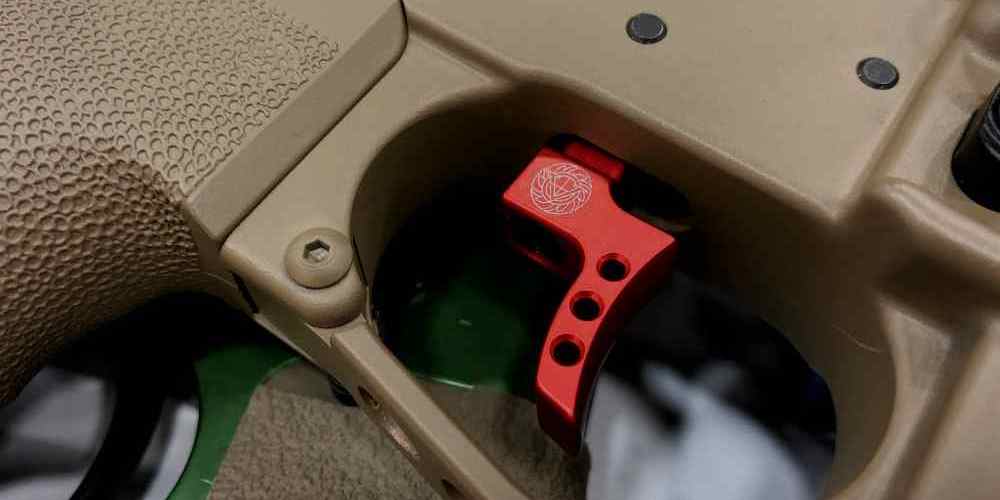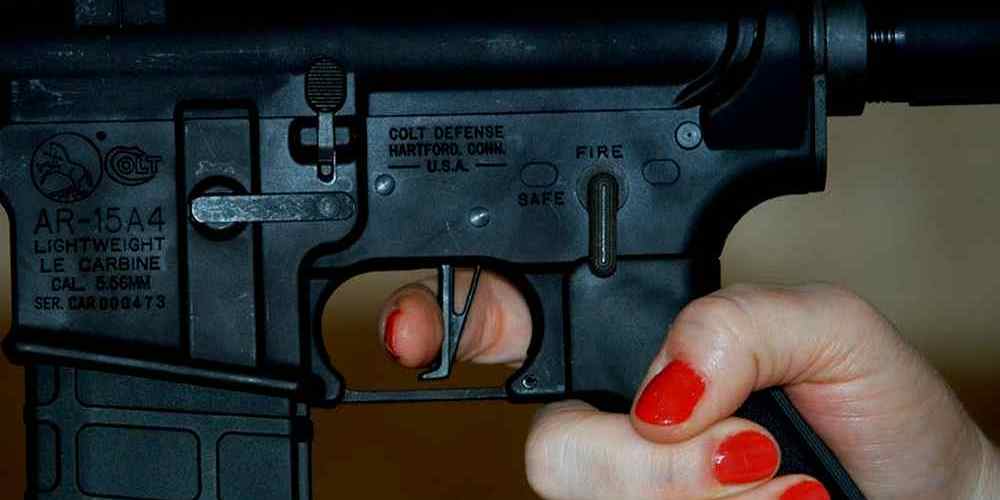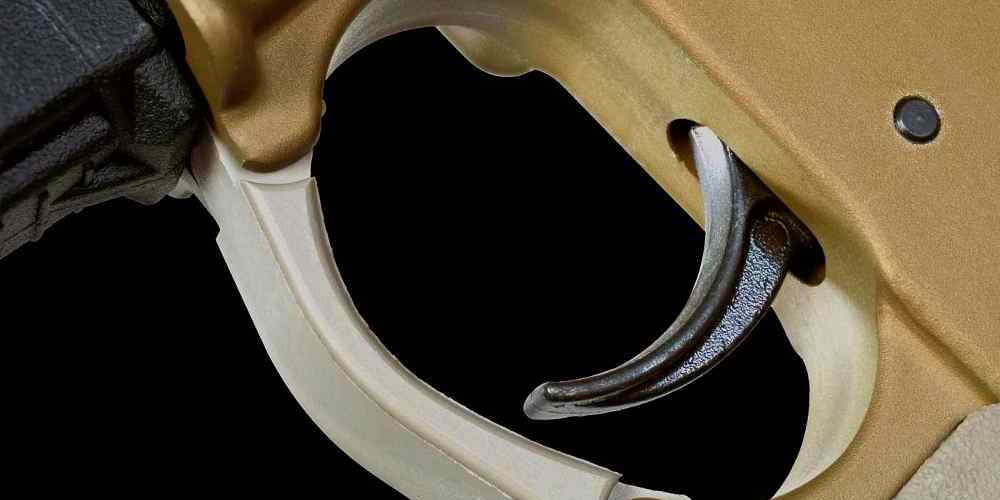“Precision meets performance with our AR15 trigger system.”
The Importance of Finding the Right Trigger for Your AR15
When it comes to shooting with your AR15, finding the right trigger can make all the difference in your performance. Balancing speed and accuracy is crucial for any shooter, and the trigger plays a key role in achieving this balance. With so many options available on the market, it can be overwhelming to choose the right trigger for your AR15. In this article, we will discuss the importance of finding the right trigger and how it can help you improve your shooting skills.
The trigger is one of the most critical components of your AR15. It is the mechanism that allows you to fire your rifle, and its design can greatly impact your shooting experience. A good trigger should provide a smooth and consistent pull, allowing you to shoot accurately and quickly. On the other hand, a poor trigger can hinder your performance, leading to missed shots and decreased accuracy.
When choosing a trigger for your AR15, it is essential to consider your shooting style and preferences. Some shooters prefer a lighter trigger pull for faster shooting, while others prefer a heavier pull for more control and accuracy. It is important to find a trigger that suits your individual needs and helps you achieve the right balance between speed and accuracy.
One of the key factors to consider when choosing a trigger is the pull weight. The pull weight refers to the amount of force required to pull the trigger and fire the rifle. A lighter pull weight can make it easier to shoot quickly, but it may also increase the risk of accidental discharges. On the other hand, a heavier pull weight can provide more control and prevent accidental firing, but it may slow down your shooting speed.
Another important factor to consider is the trigger reset. The reset is the distance the trigger must travel forward after firing before it can be pulled again. A shorter reset can help you shoot faster by reducing the time between shots, while a longer reset may provide more control and prevent trigger slap. Finding the right balance between a short reset for speed and a longer reset for control is crucial for improving your shooting performance.
In addition to pull weight and reset, it is also important to consider the trigger’s design and construction. A high-quality trigger should be made from durable materials and have a smooth and consistent pull. It should also be easy to install and adjust to suit your preferences. Investing in a well-made trigger can greatly improve your shooting experience and help you achieve better results on the range.
In conclusion, finding the right trigger for your AR15 is essential for balancing speed and accuracy in your shooting. By considering factors such as pull weight, reset, and construction, you can choose a trigger that suits your individual needs and helps you improve your performance. Whether you prefer a lighter trigger for speed or a heavier trigger for control, finding the right balance is key to becoming a better shooter. So take the time to research and test different triggers to find the one that works best for you. Your shooting skills will thank you for it.
Tips for Improving Speed and Accuracy with Your AR15 Trigger
When it comes to shooting with your AR15, finding the right balance between speed and accuracy is crucial. Your trigger plays a significant role in achieving this balance, as it is the mechanism that initiates the firing sequence. In this article, we will discuss some tips for improving speed and accuracy with your AR15 trigger.

One of the first things to consider when looking to improve your shooting performance is the weight of your trigger pull. A lighter trigger pull can help increase speed by reducing the amount of force required to fire the weapon. However, it is essential to find a balance between a light trigger pull and accuracy. A trigger that is too light can lead to unintentional discharges, compromising safety and accuracy.
Another factor to consider is the reset of your trigger. The reset is the distance the trigger must travel forward after firing before it can be pulled again. A shorter reset can help improve speed by allowing for quicker follow-up shots. However, a reset that is too short can lead to trigger slap, where the trigger resets before the shooter has fully released it, affecting accuracy.
One way to improve the reset of your trigger is by installing an aftermarket trigger kit. These kits often come with lighter trigger pulls and shorter resets, allowing for faster and more accurate shooting. However, it is essential to ensure that any modifications made to your trigger are legal and safe.
Practicing proper trigger control is also essential for improving speed and accuracy. Proper trigger control involves applying consistent pressure to the trigger while maintaining proper sight alignment and sight picture. Jerking or slapping the trigger can lead to inaccurate shots, while a smooth and consistent trigger pull can help improve accuracy.
Dry firing is an excellent way to practice proper trigger control without the need for live ammunition. By practicing dry firing regularly, you can develop muscle memory and improve your trigger control, leading to more accurate shots when shooting live rounds.
Another tip for improving speed and accuracy with your AR15 trigger is to focus on your breathing. Proper breathing techniques can help steady your aim and improve your overall shooting performance. When shooting, take a deep breath, exhale halfway, and hold your breath while taking your shot. This can help reduce movement and improve accuracy.
Finally, it is essential to practice regularly to improve your shooting skills. Set up targets at varying distances and practice shooting from different positions to simulate real-world shooting scenarios. By practicing regularly, you can improve your speed and accuracy with your AR15 trigger.
In conclusion, finding the right balance between speed and accuracy with your AR15 trigger is essential for improving your shooting performance. By considering factors such as trigger weight, reset, and control, as well as practicing proper breathing techniques and regular dry firing, you can enhance your speed and accuracy when shooting with your AR15. Remember to always prioritize safety and legality when making any modifications to your trigger, and practice regularly to improve your shooting skills.
How to Properly Maintain and Clean Your AR15 Trigger for Optimal Performance
When it comes to shooting with your AR15, finding the right balance between speed and accuracy is crucial. One of the key components that can affect your shooting performance is the trigger. A well-maintained and clean trigger can help you achieve optimal performance with your AR15.
To properly maintain and clean your AR15 trigger, you will need a few basic tools such as a screwdriver, cleaning solvent, lubricant, and a cleaning cloth. Before you begin, make sure your AR15 is unloaded and the magazine is removed. Safety should always be your top priority when handling firearms.
Start by removing the trigger assembly from your AR15. This can usually be done by removing the pins that hold the trigger in place. Once the trigger assembly is removed, inspect it for any dirt, debris, or corrosion. Use a cleaning solvent and a cleaning cloth to carefully clean the trigger assembly, making sure to remove any buildup that could affect its performance.
After cleaning the trigger assembly, it’s important to lubricate it properly. Apply a small amount of lubricant to the moving parts of the trigger, being careful not to overdo it. Too much lubricant can attract dirt and debris, which can cause malfunctions in your AR15.
Once the trigger assembly is clean and lubricated, reassemble it back into your AR15. Make sure all the pins are securely in place and that the trigger moves smoothly without any resistance. Test the trigger a few times to ensure it functions properly.
Regular maintenance and cleaning of your AR15 trigger are essential to ensure its optimal performance. Over time, dirt, debris, and corrosion can build up in the trigger assembly, causing it to malfunction or become less responsive. By taking the time to clean and lubricate your trigger, you can prevent these issues and keep your AR15 in top condition.
In addition to regular cleaning and maintenance, it’s also important to pay attention to how you use your AR15 trigger. Finding the right balance between speed and accuracy is key to improving your shooting performance. Practice using your trigger at different speeds and focus on maintaining proper trigger control to achieve the best results.
Remember that shooting with your AR15 is a skill that takes time and practice to master. By properly maintaining and cleaning your trigger, you can ensure that it performs at its best when you need it most. Take the time to care for your AR15 trigger, and you’ll see improvements in your shooting performance.
Understanding the Different Types of AR15 Triggers and Their Effects on Speed and Accuracy
When it comes to shooting with an AR15, finding the right balance between speed and accuracy is crucial. One of the key components that can greatly impact your performance is the trigger. The trigger is what initiates the firing sequence of your rifle, so having a trigger that suits your shooting style and preferences is essential.
There are several different types of AR15 triggers available on the market, each with its own unique characteristics and effects on speed and accuracy. Understanding the differences between these triggers can help you make an informed decision when choosing the right one for your rifle.
One of the most common types of AR15 triggers is the mil-spec trigger. This type of trigger is typically found in standard AR15 rifles and is known for its reliability and durability. Mil-spec triggers have a relatively heavy pull weight, usually around 6-9 pounds, which can make it more difficult to achieve precise shots. However, the heavy pull weight can also help prevent accidental discharges, making it a safe option for beginners or those who prioritize safety over speed.
For shooters looking to improve their speed and accuracy, aftermarket triggers are a popular choice. These triggers are often lighter and have a smoother pull compared to mil-spec triggers, allowing for faster and more precise shots. Some aftermarket triggers also have adjustable pull weights, which can be customized to suit your preferences.
One type of aftermarket trigger that is favored by many competitive shooters is the single-stage trigger. Single-stage triggers have a consistent pull weight throughout the entire trigger pull, making them ideal for rapid-fire shooting. These triggers have a crisp break, which can help improve accuracy by reducing the amount of movement required to fire the rifle.
Another popular option is the two-stage trigger. Two-stage triggers have a lighter initial pull weight followed by a heavier break, which can help shooters achieve a more controlled and precise shot. The two-stage trigger is often preferred by precision shooters who prioritize accuracy over speed.
In addition to the type of trigger, the pull weight is another important factor to consider when balancing speed and accuracy. A lighter pull weight can help improve speed by reducing the amount of force required to fire the rifle. However, a lighter pull weight can also increase the risk of accidental discharges, especially for inexperienced shooters.
On the other hand, a heavier pull weight can help improve accuracy by requiring more deliberate and controlled trigger manipulation. This can be beneficial for shooters who prioritize precision over speed. Finding the right balance between pull weight and trigger type is essential for optimizing your performance with an AR15.
Ultimately, the best way to find the right trigger for your AR15 is to try out different options and see which one works best for you. Consider factors such as your shooting style, preferences, and intended use for the rifle when making your decision. By understanding the different types of AR15 triggers and their effects on speed and accuracy, you can make an informed choice that will help you achieve your shooting goals.
Training Drills to Enhance Your Trigger Control and Shooting Skills with an AR15
When it comes to shooting with an AR15, finding the right balance between speed and accuracy is crucial. A smooth trigger pull is essential for achieving this balance, as it directly affects your ability to place accurate shots on target quickly. In this article, we will discuss some training drills that can help you enhance your trigger control and shooting skills with an AR15.
One of the most effective ways to improve your trigger control is through dry fire practice. This involves practicing your trigger pull without live ammunition, allowing you to focus solely on your technique. Start by ensuring your AR15 is unloaded and pointing in a safe direction. Then, practice squeezing the trigger slowly and smoothly, paying attention to any jerky movements or flinching. By practicing this motion repeatedly, you can train your muscles to perform a consistent trigger pull every time.
Another useful drill for improving trigger control is the “ball and dummy” drill. This involves loading a mix of live rounds and dummy rounds (which do not fire) into your magazine without looking at the order. As you shoot, pay attention to how your trigger pull changes when you encounter a dummy round. This drill can help you identify any flinching or jerking motions that may be affecting your accuracy.
To further enhance your trigger control, try incorporating a shot timer into your training routine. This device can help you track your speed and accuracy, allowing you to set goals and measure your progress over time. Start by practicing slow, deliberate trigger pulls and gradually increase your speed as you become more comfortable with the motion. Remember, it’s important to maintain accuracy even as you increase your speed, so don’t sacrifice precision for the sake of speed.
In addition to practicing your trigger control, it’s also important to work on your overall shooting technique. This includes proper stance, grip, and sight alignment, all of which can affect your ability to place accurate shots on target. By focusing on these fundamentals, you can improve your shooting skills and become a more effective marksman with your AR15.
As you work on enhancing your trigger control and shooting skills, don’t forget to incorporate movement into your training drills. Shooting on the move can help simulate real-world scenarios and improve your ability to engage targets quickly and accurately. Practice moving smoothly and efficiently while maintaining proper trigger control, and you’ll be better prepared to handle dynamic shooting situations.
In conclusion, finding the right balance between speed and accuracy with your AR15 trigger is essential for becoming a proficient shooter. By incorporating training drills that focus on trigger control, shooting technique, and movement, you can improve your skills and become a more effective marksman. Remember to practice regularly and stay focused on your goals, and you’ll see improvements in your shooting abilities over time. So grab your AR15, hit the range, and start honing your trigger control today!






